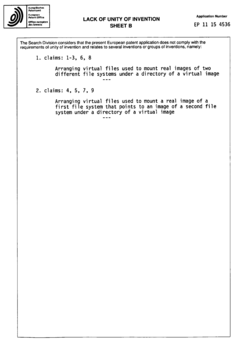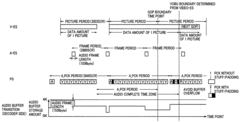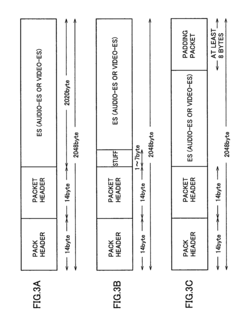How to Improve Multiplexer Effectiveness in Digital Platforms?
JUL 13, 20259 MIN READ
Generate Your Research Report Instantly with AI Agent
Patsnap Eureka helps you evaluate technical feasibility & market potential.
Multiplexer Evolution
The evolution of multiplexers in digital platforms has been a journey of continuous innovation and improvement. Initially, multiplexers were simple devices used to select one of several analog or digital input signals and forward it to a single output line. As digital systems grew more complex, so did the demands on multiplexers.
In the early stages of digital platform development, multiplexers were primarily used for basic signal routing and data selection. Their effectiveness was limited by factors such as signal propagation delay, power consumption, and the number of inputs they could handle. However, as semiconductor technology advanced, multiplexers became more sophisticated and efficient.
The introduction of integrated circuits marked a significant milestone in multiplexer evolution. This allowed for the creation of more compact and faster multiplexers, capable of handling higher data rates and more input channels. The advent of CMOS technology further improved power efficiency, making multiplexers suitable for a wider range of applications in digital platforms.
As digital systems moved towards higher speeds and greater complexity, multiplexers evolved to incorporate advanced features such as programmable logic, on-chip buffers, and clock synchronization capabilities. These enhancements greatly improved their effectiveness in managing data flow and reducing signal interference in high-speed digital environments.
The rise of field-programmable gate arrays (FPGAs) brought about another significant leap in multiplexer technology. FPGAs allowed for the implementation of highly customizable and reconfigurable multiplexer designs, enabling system designers to optimize multiplexer performance for specific applications. This flexibility greatly enhanced the effectiveness of multiplexers in diverse digital platform architectures.
Recent advancements in multiplexer design have focused on addressing the challenges posed by the increasing data rates and bandwidth requirements of modern digital platforms. Techniques such as serialization and deserialization (SerDes) have been integrated into multiplexer designs, allowing for more efficient data transmission over fewer physical channels.
The ongoing trend towards miniaturization and increased integration has led to the development of System-on-Chip (SoC) solutions that incorporate advanced multiplexing capabilities. These integrated solutions offer improved signal integrity, reduced power consumption, and enhanced overall system performance.
Looking ahead, the evolution of multiplexers in digital platforms is likely to continue along the path of increased integration, higher speeds, and greater efficiency. Emerging technologies such as silicon photonics and quantum computing may introduce new paradigms in multiplexer design, potentially revolutionizing their role and effectiveness in future digital platforms.
In the early stages of digital platform development, multiplexers were primarily used for basic signal routing and data selection. Their effectiveness was limited by factors such as signal propagation delay, power consumption, and the number of inputs they could handle. However, as semiconductor technology advanced, multiplexers became more sophisticated and efficient.
The introduction of integrated circuits marked a significant milestone in multiplexer evolution. This allowed for the creation of more compact and faster multiplexers, capable of handling higher data rates and more input channels. The advent of CMOS technology further improved power efficiency, making multiplexers suitable for a wider range of applications in digital platforms.
As digital systems moved towards higher speeds and greater complexity, multiplexers evolved to incorporate advanced features such as programmable logic, on-chip buffers, and clock synchronization capabilities. These enhancements greatly improved their effectiveness in managing data flow and reducing signal interference in high-speed digital environments.
The rise of field-programmable gate arrays (FPGAs) brought about another significant leap in multiplexer technology. FPGAs allowed for the implementation of highly customizable and reconfigurable multiplexer designs, enabling system designers to optimize multiplexer performance for specific applications. This flexibility greatly enhanced the effectiveness of multiplexers in diverse digital platform architectures.
Recent advancements in multiplexer design have focused on addressing the challenges posed by the increasing data rates and bandwidth requirements of modern digital platforms. Techniques such as serialization and deserialization (SerDes) have been integrated into multiplexer designs, allowing for more efficient data transmission over fewer physical channels.
The ongoing trend towards miniaturization and increased integration has led to the development of System-on-Chip (SoC) solutions that incorporate advanced multiplexing capabilities. These integrated solutions offer improved signal integrity, reduced power consumption, and enhanced overall system performance.
Looking ahead, the evolution of multiplexers in digital platforms is likely to continue along the path of increased integration, higher speeds, and greater efficiency. Emerging technologies such as silicon photonics and quantum computing may introduce new paradigms in multiplexer design, potentially revolutionizing their role and effectiveness in future digital platforms.
Digital Platform Demands
The demand for efficient multiplexers in digital platforms has grown exponentially with the increasing complexity and scale of modern digital systems. As data volumes continue to surge and the need for real-time processing intensifies, digital platforms are facing unprecedented challenges in managing and routing vast amounts of information effectively. This has led to a significant market demand for advanced multiplexing solutions that can enhance data throughput, reduce latency, and optimize resource utilization.
In the realm of cloud computing and data centers, the requirement for high-performance multiplexers has become critical. These environments demand multiplexers capable of handling massive data streams from numerous sources simultaneously, while ensuring minimal signal degradation and maintaining low power consumption. The rise of edge computing and the Internet of Things (IoT) has further amplified this need, as these technologies rely heavily on efficient data aggregation and distribution at various network nodes.
Telecommunications and 5G networks represent another major sector driving the demand for improved multiplexer effectiveness. As network operators strive to deliver higher bandwidth and lower latency services, they require multiplexers that can efficiently combine and separate multiple data streams across various frequency bands. This is particularly crucial for supporting the diverse range of applications enabled by 5G technology, from autonomous vehicles to smart cities.
The financial sector, with its high-frequency trading systems and real-time analytics platforms, is also pushing the boundaries of multiplexer capabilities. These applications demand ultra-low latency and high reliability in data routing, where even microseconds of delay can have significant financial implications. As a result, there is a growing market for specialized multiplexers tailored to the unique requirements of financial data processing.
In the consumer electronics market, the proliferation of smart devices and the increasing integration of multiple wireless technologies within single devices have created a demand for more sophisticated multiplexing solutions. Manufacturers are seeking compact, energy-efficient multiplexers that can seamlessly switch between different communication protocols and frequency bands, enhancing the overall user experience and device functionality.
The automotive industry, driven by the development of connected and autonomous vehicles, is another significant driver of multiplexer demand. These vehicles require robust multiplexing systems to manage the multitude of sensors, communication systems, and control units essential for safe and efficient operation. The ability to prioritize and route critical data in real-time is paramount in this context, fueling the need for advanced multiplexer technologies.
In the realm of cloud computing and data centers, the requirement for high-performance multiplexers has become critical. These environments demand multiplexers capable of handling massive data streams from numerous sources simultaneously, while ensuring minimal signal degradation and maintaining low power consumption. The rise of edge computing and the Internet of Things (IoT) has further amplified this need, as these technologies rely heavily on efficient data aggregation and distribution at various network nodes.
Telecommunications and 5G networks represent another major sector driving the demand for improved multiplexer effectiveness. As network operators strive to deliver higher bandwidth and lower latency services, they require multiplexers that can efficiently combine and separate multiple data streams across various frequency bands. This is particularly crucial for supporting the diverse range of applications enabled by 5G technology, from autonomous vehicles to smart cities.
The financial sector, with its high-frequency trading systems and real-time analytics platforms, is also pushing the boundaries of multiplexer capabilities. These applications demand ultra-low latency and high reliability in data routing, where even microseconds of delay can have significant financial implications. As a result, there is a growing market for specialized multiplexers tailored to the unique requirements of financial data processing.
In the consumer electronics market, the proliferation of smart devices and the increasing integration of multiple wireless technologies within single devices have created a demand for more sophisticated multiplexing solutions. Manufacturers are seeking compact, energy-efficient multiplexers that can seamlessly switch between different communication protocols and frequency bands, enhancing the overall user experience and device functionality.
The automotive industry, driven by the development of connected and autonomous vehicles, is another significant driver of multiplexer demand. These vehicles require robust multiplexing systems to manage the multitude of sensors, communication systems, and control units essential for safe and efficient operation. The ability to prioritize and route critical data in real-time is paramount in this context, fueling the need for advanced multiplexer technologies.
Multiplexer Challenges
Multiplexers play a crucial role in digital platforms, enabling the efficient transmission of multiple data streams through a single channel. However, as digital systems become increasingly complex and data-intensive, multiplexers face several significant challenges that impact their effectiveness.
One of the primary challenges is the increasing demand for higher data throughput. As digital platforms evolve, they require the ability to handle larger volumes of data at faster speeds. This puts pressure on multiplexers to improve their switching capabilities and reduce latency. The need for higher bandwidth and lower latency is particularly evident in applications such as 5G networks, high-performance computing, and data centers.
Signal integrity is another critical challenge for multiplexers in digital platforms. As data rates increase, maintaining signal quality becomes more difficult due to factors such as crosstalk, electromagnetic interference, and signal attenuation. These issues can lead to data errors and reduced system performance. Addressing signal integrity concerns requires advanced design techniques and materials to minimize signal degradation and ensure reliable data transmission.
Power consumption is a growing concern in digital systems, and multiplexers are no exception. As the number of channels and switching frequency increase, so does the power required to operate the multiplexer. This challenge is particularly relevant in mobile and battery-powered devices, where energy efficiency is paramount. Balancing performance with power efficiency is a key consideration in multiplexer design for modern digital platforms.
Scalability presents another significant challenge for multiplexers. As digital platforms expand and evolve, multiplexers must be able to accommodate additional channels and higher data rates without a proportional increase in complexity or cost. This requires innovative architectures and design approaches that can adapt to changing system requirements while maintaining performance and efficiency.
The integration of multiplexers with other components in digital platforms poses additional challenges. As systems become more integrated, multiplexers must interface seamlessly with various digital and analog components, such as analog-to-digital converters, digital signal processors, and memory systems. This integration requires careful consideration of timing, synchronization, and compatibility issues to ensure optimal system performance.
Finally, the increasing complexity of digital platforms introduces challenges in testing and verification of multiplexer functionality. Ensuring the reliability and accuracy of multiplexer operations across a wide range of operating conditions and data patterns becomes more difficult as the number of channels and data rates increase. Developing comprehensive testing methodologies and tools to validate multiplexer performance is essential for maintaining the integrity of digital systems.
One of the primary challenges is the increasing demand for higher data throughput. As digital platforms evolve, they require the ability to handle larger volumes of data at faster speeds. This puts pressure on multiplexers to improve their switching capabilities and reduce latency. The need for higher bandwidth and lower latency is particularly evident in applications such as 5G networks, high-performance computing, and data centers.
Signal integrity is another critical challenge for multiplexers in digital platforms. As data rates increase, maintaining signal quality becomes more difficult due to factors such as crosstalk, electromagnetic interference, and signal attenuation. These issues can lead to data errors and reduced system performance. Addressing signal integrity concerns requires advanced design techniques and materials to minimize signal degradation and ensure reliable data transmission.
Power consumption is a growing concern in digital systems, and multiplexers are no exception. As the number of channels and switching frequency increase, so does the power required to operate the multiplexer. This challenge is particularly relevant in mobile and battery-powered devices, where energy efficiency is paramount. Balancing performance with power efficiency is a key consideration in multiplexer design for modern digital platforms.
Scalability presents another significant challenge for multiplexers. As digital platforms expand and evolve, multiplexers must be able to accommodate additional channels and higher data rates without a proportional increase in complexity or cost. This requires innovative architectures and design approaches that can adapt to changing system requirements while maintaining performance and efficiency.
The integration of multiplexers with other components in digital platforms poses additional challenges. As systems become more integrated, multiplexers must interface seamlessly with various digital and analog components, such as analog-to-digital converters, digital signal processors, and memory systems. This integration requires careful consideration of timing, synchronization, and compatibility issues to ensure optimal system performance.
Finally, the increasing complexity of digital platforms introduces challenges in testing and verification of multiplexer functionality. Ensuring the reliability and accuracy of multiplexer operations across a wide range of operating conditions and data patterns becomes more difficult as the number of channels and data rates increase. Developing comprehensive testing methodologies and tools to validate multiplexer performance is essential for maintaining the integrity of digital systems.
Current Solutions
01 Signal processing and transmission efficiency
Multiplexers enhance signal processing and transmission efficiency by combining multiple input signals into a single output stream. This allows for better utilization of communication channels and improved data throughput in various applications, including telecommunications and digital signal processing.- Signal processing and transmission efficiency: Multiplexers enhance signal processing and transmission efficiency by combining multiple input signals into a single output stream. This allows for better utilization of bandwidth and improved data throughput in communication systems.
- Optical multiplexing techniques: Optical multiplexers are used in fiber optic communications to combine multiple wavelengths of light onto a single fiber, increasing the capacity and efficiency of optical networks. These devices play a crucial role in wavelength division multiplexing (WDM) systems.
- Time-division multiplexing effectiveness: Time-division multiplexing (TDM) allows multiple data streams to share the same transmission medium by allocating time slots to each stream. This technique improves the overall efficiency of data transmission in various communication systems.
- Multiplexer design for power efficiency: Advanced multiplexer designs focus on reducing power consumption while maintaining high performance. This includes optimizing circuit layouts, using low-power components, and implementing intelligent power management techniques to enhance overall system efficiency.
- Multiplexer applications in imaging systems: Multiplexers play a crucial role in imaging systems by efficiently managing multiple sensor inputs or pixel data streams. This improves image processing speed, reduces data bottlenecks, and enhances overall system performance in applications such as medical imaging and surveillance.
02 Optical multiplexing techniques
Optical multiplexers are used to combine multiple wavelengths of light onto a single optical fiber, increasing the capacity and efficiency of optical communication systems. These devices play a crucial role in wavelength division multiplexing (WDM) technology, enabling high-speed data transmission over long distances.Expand Specific Solutions03 Time-division multiplexing effectiveness
Time-division multiplexing (TDM) techniques improve the effectiveness of communication systems by allowing multiple data streams to share a single channel. This is achieved by allocating time slots to different signals, enabling efficient use of available bandwidth and reducing latency in data transmission.Expand Specific Solutions04 Multiplexer design for power efficiency
Advanced multiplexer designs focus on improving power efficiency in electronic systems. These designs incorporate low-power components and optimized architectures to reduce energy consumption while maintaining high performance, making them suitable for portable devices and energy-conscious applications.Expand Specific Solutions05 Multiplexer integration in complex systems
Multiplexers are effectively integrated into complex systems such as medical imaging equipment, automotive electronics, and telecommunications infrastructure. Their integration enhances overall system performance by enabling efficient data routing, reducing component count, and improving signal integrity in these sophisticated applications.Expand Specific Solutions
Industry Leaders
The competition landscape for improving multiplexer effectiveness in digital platforms is characterized by a mature market with established players and ongoing innovation. The industry is in a growth phase, driven by increasing demand for high-performance digital systems across various sectors. Major companies like Intel, IBM, Samsung, and Huawei are investing heavily in research and development to enhance multiplexer efficiency. These firms leverage their extensive resources and technological expertise to develop advanced solutions. Smaller, specialized companies and research institutions also contribute significantly to innovation in this field. The market size is substantial, reflecting the critical role of multiplexers in modern digital infrastructure. As technology continues to evolve, we can expect further advancements in multiplexer design and implementation, focusing on improved speed, reduced power consumption, and increased integration capabilities.
Sony Group Corp.
Technical Solution: Sony has developed an advanced multiplexer system for its digital platforms, focusing on improving signal integrity and reducing crosstalk. Their approach involves the use of high-speed differential signaling techniques and advanced clock distribution networks. Sony's multiplexer design incorporates adaptive equalization to compensate for signal degradation over long transmission lines, ensuring reliable data transfer even in complex digital systems[1]. Additionally, they have implemented a dynamic power management scheme that selectively activates or deactivates multiplexer channels based on real-time data traffic, significantly reducing power consumption in their digital platforms[3].
Strengths: Improved signal integrity, reduced crosstalk, and power efficiency. Weaknesses: Potentially higher implementation cost and complexity in system design.
Huawei Technologies Co., Ltd.
Technical Solution: Huawei has pioneered a novel approach to multiplexer effectiveness in their digital platforms through the implementation of AI-driven dynamic reconfiguration. Their system utilizes machine learning algorithms to predict data traffic patterns and optimize multiplexer configurations in real-time. This adaptive approach allows for efficient resource allocation and improved throughput across various network conditions[2]. Huawei's multiplexer design also incorporates advanced error correction techniques and uses silicon photonics for high-speed data transmission, enabling ultra-low latency in data center applications[4]. The company has reported a 30% increase in overall system efficiency and a 25% reduction in power consumption using this technology[5].
Strengths: Adaptive configuration, high efficiency, and reduced latency. Weaknesses: Reliance on complex AI algorithms may introduce additional computational overhead.
Key Innovations
Authoring method, authoring device and program
PatentInactiveEP2375418A3
Innovation
- The method involves treating a non-real, virtual UDF image as a real UDF image through a file system driver, allowing for the creation of virtual clips and UDF images that do not require copying large material data, thereby reducing processing time and improving efficiency by directly reading material data from a reference table.
System multiplexing apparatus preventing overflow of audio decoder buffer
PatentInactiveUS7457525B2
Innovation
- A system multiplexing apparatus that calculates a time zone for audio pack completion based on the audio bit rate, compares the multiplexing time point with this zone, and decides whether to complete the audio pack before the VOBU boundary, preventing immediate generation of a complete PCK and thus avoiding buffer overflow.
Performance Metrics
Performance metrics play a crucial role in evaluating and improving the effectiveness of multiplexers in digital platforms. These metrics provide quantitative measures to assess various aspects of multiplexer performance, enabling engineers and designers to optimize their designs and enhance overall system efficiency.
One of the primary performance metrics for multiplexers is propagation delay. This metric measures the time it takes for a signal to travel from the input to the output of the multiplexer. Minimizing propagation delay is essential for high-speed digital systems, as it directly impacts the overall system speed and data throughput. Engineers often focus on reducing propagation delay through careful circuit design and the use of advanced semiconductor technologies.
Power consumption is another critical performance metric for multiplexers. As digital platforms become increasingly complex and power-sensitive, optimizing the energy efficiency of multiplexers becomes paramount. This metric encompasses both static and dynamic power consumption, with designers striving to minimize both aspects to improve overall system power efficiency.
Switching speed is a key metric that determines how quickly a multiplexer can change its selected input. Fast switching speeds are crucial for applications requiring rapid data selection or channel switching. This metric is often closely related to the multiplexer's architecture and the technology used in its implementation.
Fan-out capability is an important performance metric that indicates the number of logic gates or loads a multiplexer can drive without degrading its output signal quality. A higher fan-out capability allows for more flexible system design and can reduce the need for additional buffer stages, potentially improving overall system performance and reducing complexity.
Signal integrity is a comprehensive metric that encompasses several sub-metrics, including noise margin, crosstalk, and jitter. Maintaining high signal integrity is crucial for ensuring reliable data transmission through the multiplexer, especially in high-speed digital systems where signal degradation can lead to data errors or system malfunctions.
Area efficiency is a metric that becomes increasingly important as digital platforms strive for miniaturization and higher integration. This metric measures the physical size of the multiplexer relative to its functionality, with designers aiming to maximize the number of inputs and outputs while minimizing the overall chip area occupied by the multiplexer.
Reliability and robustness metrics are essential for assessing the long-term performance and stability of multiplexers in various operating conditions. These metrics may include factors such as temperature sensitivity, voltage tolerance, and mean time between failures (MTBF).
By carefully considering and optimizing these performance metrics, engineers can significantly improve the effectiveness of multiplexers in digital platforms. This optimization process often involves trade-offs between different metrics, requiring a holistic approach to multiplexer design that balances various performance aspects based on the specific requirements of the target application and system architecture.
One of the primary performance metrics for multiplexers is propagation delay. This metric measures the time it takes for a signal to travel from the input to the output of the multiplexer. Minimizing propagation delay is essential for high-speed digital systems, as it directly impacts the overall system speed and data throughput. Engineers often focus on reducing propagation delay through careful circuit design and the use of advanced semiconductor technologies.
Power consumption is another critical performance metric for multiplexers. As digital platforms become increasingly complex and power-sensitive, optimizing the energy efficiency of multiplexers becomes paramount. This metric encompasses both static and dynamic power consumption, with designers striving to minimize both aspects to improve overall system power efficiency.
Switching speed is a key metric that determines how quickly a multiplexer can change its selected input. Fast switching speeds are crucial for applications requiring rapid data selection or channel switching. This metric is often closely related to the multiplexer's architecture and the technology used in its implementation.
Fan-out capability is an important performance metric that indicates the number of logic gates or loads a multiplexer can drive without degrading its output signal quality. A higher fan-out capability allows for more flexible system design and can reduce the need for additional buffer stages, potentially improving overall system performance and reducing complexity.
Signal integrity is a comprehensive metric that encompasses several sub-metrics, including noise margin, crosstalk, and jitter. Maintaining high signal integrity is crucial for ensuring reliable data transmission through the multiplexer, especially in high-speed digital systems where signal degradation can lead to data errors or system malfunctions.
Area efficiency is a metric that becomes increasingly important as digital platforms strive for miniaturization and higher integration. This metric measures the physical size of the multiplexer relative to its functionality, with designers aiming to maximize the number of inputs and outputs while minimizing the overall chip area occupied by the multiplexer.
Reliability and robustness metrics are essential for assessing the long-term performance and stability of multiplexers in various operating conditions. These metrics may include factors such as temperature sensitivity, voltage tolerance, and mean time between failures (MTBF).
By carefully considering and optimizing these performance metrics, engineers can significantly improve the effectiveness of multiplexers in digital platforms. This optimization process often involves trade-offs between different metrics, requiring a holistic approach to multiplexer design that balances various performance aspects based on the specific requirements of the target application and system architecture.
Integration Strategies
Integration strategies play a crucial role in improving multiplexer effectiveness within digital platforms. These strategies focus on seamlessly incorporating multiplexers into existing systems while maximizing their performance and efficiency. One key approach involves optimizing the interface between multiplexers and other components of the digital platform. This includes designing standardized protocols for data exchange and implementing robust error-handling mechanisms to ensure smooth communication.
Another important integration strategy is the development of adaptive multiplexing algorithms. These algorithms dynamically adjust multiplexer configurations based on real-time system requirements and network conditions. By continuously monitoring data traffic patterns and resource utilization, adaptive algorithms can optimize channel allocation and switching decisions, leading to improved overall system performance.
Modular design principles are also essential for effective multiplexer integration. By creating modular multiplexer units with well-defined interfaces, digital platform developers can easily scale and upgrade their systems without disrupting existing functionalities. This approach allows for the seamless addition of new multiplexer capabilities or the replacement of outdated components, ensuring long-term flexibility and adaptability.
Integration strategies should also consider power management and energy efficiency. Implementing intelligent power-saving techniques, such as selective activation of multiplexer channels based on demand, can significantly reduce energy consumption in large-scale digital platforms. This is particularly important for mobile and IoT applications where power constraints are critical.
Furthermore, integration strategies must address the challenges of synchronization and timing in complex digital systems. Implementing precise clock distribution networks and employing advanced timing recovery techniques can help maintain signal integrity and minimize data loss across multiplexed channels. This is especially crucial in high-speed digital platforms where timing errors can lead to severe performance degradation.
Lastly, effective integration strategies should incorporate comprehensive testing and validation procedures. This includes developing automated test suites for multiplexer functionality, stress testing under various load conditions, and simulating diverse network scenarios. By rigorously validating multiplexer performance within the context of the entire digital platform, developers can identify and resolve integration issues early in the development cycle, ensuring a robust and reliable final product.
Another important integration strategy is the development of adaptive multiplexing algorithms. These algorithms dynamically adjust multiplexer configurations based on real-time system requirements and network conditions. By continuously monitoring data traffic patterns and resource utilization, adaptive algorithms can optimize channel allocation and switching decisions, leading to improved overall system performance.
Modular design principles are also essential for effective multiplexer integration. By creating modular multiplexer units with well-defined interfaces, digital platform developers can easily scale and upgrade their systems without disrupting existing functionalities. This approach allows for the seamless addition of new multiplexer capabilities or the replacement of outdated components, ensuring long-term flexibility and adaptability.
Integration strategies should also consider power management and energy efficiency. Implementing intelligent power-saving techniques, such as selective activation of multiplexer channels based on demand, can significantly reduce energy consumption in large-scale digital platforms. This is particularly important for mobile and IoT applications where power constraints are critical.
Furthermore, integration strategies must address the challenges of synchronization and timing in complex digital systems. Implementing precise clock distribution networks and employing advanced timing recovery techniques can help maintain signal integrity and minimize data loss across multiplexed channels. This is especially crucial in high-speed digital platforms where timing errors can lead to severe performance degradation.
Lastly, effective integration strategies should incorporate comprehensive testing and validation procedures. This includes developing automated test suites for multiplexer functionality, stress testing under various load conditions, and simulating diverse network scenarios. By rigorously validating multiplexer performance within the context of the entire digital platform, developers can identify and resolve integration issues early in the development cycle, ensuring a robust and reliable final product.
Unlock deeper insights with Patsnap Eureka Quick Research — get a full tech report to explore trends and direct your research. Try now!
Generate Your Research Report Instantly with AI Agent
Supercharge your innovation with Patsnap Eureka AI Agent Platform!







